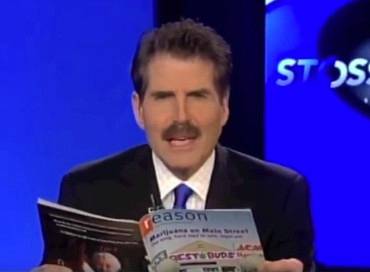Don’t Blame Google for a Feature Consumers Want

 It’s very rare I disagree with the great freedom-loving journalist John Stossel, but his column at Townhall this week made me raise an eyebrow. In it, he criticizes Google and its platform YouTube for having “power they shouldn’t have.” He was concerned that YouTube would “not allow” his new video, “Socialism Leads to Violence” to be viewed by young people. After his complaint, Google apparently lifted the restriction. He also comments that, “If Google and Facebook decide adults should be ‘protected’ from seeing those videos, too, then ‘Stossel TV’ will go dark.”
It’s very rare I disagree with the great freedom-loving journalist John Stossel, but his column at Townhall this week made me raise an eyebrow. In it, he criticizes Google and its platform YouTube for having “power they shouldn’t have.” He was concerned that YouTube would “not allow” his new video, “Socialism Leads to Violence” to be viewed by young people. After his complaint, Google apparently lifted the restriction. He also comments that, “If Google and Facebook decide adults should be ‘protected’ from seeing those videos, too, then ‘Stossel TV’ will go dark.”
There appears to be some confusion in Stossel’s column about the nature of his relationship with the YouTube platform. Firstly, with the first seven seconds of the (excellent) video concerned, there is a bloody shot of a dead body. No warning is given by the (again excellent) host Gloria Alvarez. This may be distressing to some viewers. The presence of such distressing shots is exactly why Google has an age-based ratings system like movies or TV shows. People who don’t want to see such things can turn on a “restricted mode” that stops them accidentally viewing videos that might upset them. Parents probably appreciate having such an option available to them.
So when Stossel says, “if YouTube won’t let young people watch some of my videos…,” he is misplacing the blame. To be perfectly clear—the choice not to see a video is the viewer’s, not Google’s or Youtube’s. This is exactly as it should be—the consumer makes the choice.
To think otherwise—that the producer has a right to put out videos without any restrictions from a platform—would be an odd position for a libertarian to espouse. It is tantamount to imposing a government-backed positive right to free speech, as opposed to the negative right that government should not interfere with your speech, so ably summed up by the beginning of the First Amendment, “Congress shall make no law…abridging the freedom of speech.”
Moreover, such a positive right to no restrictions interferes with the property rights of the platform owner. It should go without saying that the YouTube platform allows John Stossel to reach his audience without charge. However, all economic transactions come with some cost, and the cost to Stossel and his company is accepting YouTube’s terms of service, which include accepting the “restricted mode” feature.
It is a wonderful thing that Stossel TV’s message of freedom reaches so many people, and it is a wonderful thing that YouTube facilitates this. We should probably celebrate the nature of the economic transaction that allows this rather than complain about a feature that only 2 percent of YouTube users actually turn on.
Finally, to be clear—go and watch Gloria’s excellent warning about the evils of socialism. Just be aware that you will likely see some unpleasant sights.